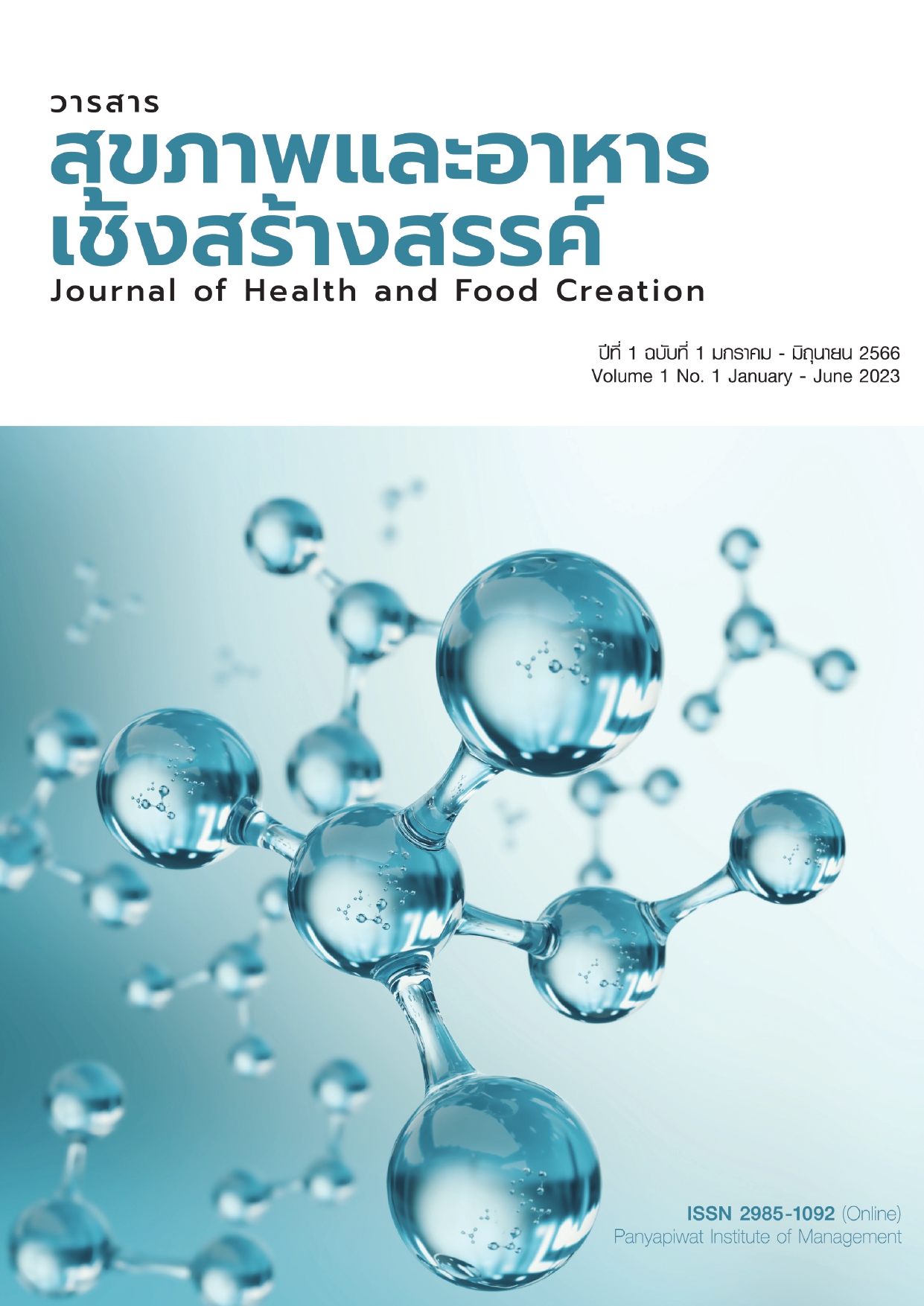การประยุกต์ใช้เทคโนโลยีดิจิทัลในการดูแลผู้ป่วยมะเร็งที่ได้รับยาเคมีบำบัด
คำสำคัญ:
ทคโนโลยีดิจิทัล, ผู้ป่วยมะเร็ง, ยาเคมีบำบัดบทคัดย่อ
โรคมะเร็งเป็นปัญหาการเจ็บป่วยและการเสียชีวิตที่สำคัญของประเทศไทย ทำให้ผู้ป่วยสูญเสียการมีคุณภาพชีวิตที่ดี เกิดความทุกข์ทรมานจากอาการของโรค เกิดค่าใช้จ่ายในการรักษาและการเดินทาง เสียรายได้ทั้งผู้ป่วยและครอบครัว ส่งผลกระทบต่อเศรษฐกิจและสังคม แนวทางการรักษาหลักของโรคมะเร็งคือ การให้ยาเคมีบำบัด ผู้ป่วยที่ได้รับยาเคมีบำบัดอาจเกิดอาการข้างเคียง ได้แก่ ภาวะการกดไขกระดูก ภาวะเม็ดเลือดขาวชนิดนิวโทรฟิวต่ำ อาการผมร่วง ชาปลายมือปลายเท้า อ่อนเพลีย ปวดกล้ามเนื้อ และเบื่ออาหาร สิ่งสำคัญในการดูแลผู้ป่วยคือ การติดตามอาการอย่างต่อเนื่องและการจัดการอาการข้างเคียงที่เกิดขึ้น เพื่อส่งเสริมคุณภาพชีวิตของผู้ป่วยทั้งด้านร่างกายและจิตใจ ปัจจุบันเทคโนโลยีดิจิทัลได้เข้ามาเป็นส่วนหนึ่งในชีวิตประจำวันของมนุษย์ และนำมาใช้ในงานด้านสุขภาพ เช่น อุปกรณ์ทางสุขภาพเคลื่อนที่ การแพทย์ทางไกล และการพยาบาลทางไกลสำหรับการติดตามดูแลภาวะสุขภาพของผู้ป่วย การประยุกต์ใช้เทคโนโลยีดิจิทัลในการดูแลผู้ป่วยมะเร็งที่ได้รับยาเคมีบำบัด จึงเป็นการเพิ่มประสิทธิภาพการดูแลรักษาผู้ป่วยโรคมะเร็ง สามารถติดตามอาการข้างเคียงหลังให้ยาเคมีบำบัดอย่างต่อเนื่อง ช่วยลดความแออัดของการรับบริการในโรงพยาบาล ลดความเสี่ยงจากการแพร่ระบาดของโรค COVID-19 ลดจำนวนครั้งในการมาโรงพยาบาล และช่วยประหยัดค่าใช้จ่ายในการเดินทางอีกด้วย
เอกสารอ้างอิง
Chaitosa, R., & Sumdaengrit, B. (2016). Symptom severity in gynecological oncology patients receiving paclitaxel and carboplatin. Journal of Nursing and Health Care, 34(2), 49-57. [in Thai]
Cheevakasemsook, A. (2021). Digital technology for patient care: An essential for cardio-thoracic nurses in the 21st century. Thai Journal of Cardio-Thoracic Nursing, 32(1), 2-13. [in Thai]
França, A. C., Rodrigues, A. B., Aguiar, M. I. F. D., Silva, R. A., Freitas, F. M. C., & Melo, G. A. A. (2019). Telenursing for the control of chemotherapy-induced nausea and vomiting: A randomized clinical trial. Texto & Contexto-Enfermagem, 28, 1-15.
Kitreerawutiwong, K., Kitreerawutiwong, N., & Wongsawang, N. (2017). Public health in the era of Thailand 4.0. Journal of Health Science, 26(2), 377-388. [in Thai]
Ministry of Public Health. (2021). Digital health strategy, Ministry of Public Health (2021-2025). https://ict.moph.go.th/upload_file/files/97c2287c8f04e13f81fec13e431e7a5e.pdf [in Thai]
National Cancer Institute. (2018). National cancer control programme (2018-2022). https://www.nci.go.th/th/New_web/officer/of3.html [in Thai]
National Cancer Institute. (2021). Hospital-based cancer registry 2020. https://www.nci.go.th/e_book/hosbased_2563/files/main.pdf [in Thai]
Promnimit, A., Pakdevong, N., & Binhosen, V. (2022). Feasibility study of symptoms management application for colorectal cancer patient undergoing chemotherapy. The Journal of Faculty of Nursing Burapha University, 3(2), 40-52. [in Thai]
Saedkong, P., Potchana, R., Wayo, W., & Klungklang, R. (2020). Effects of using Hug Tai application on health literacy among patients with diabetes type 2, hypertension, and chronic kidney disease stage 3 at Wat Nong Weang Pra-Aramluarg parimary care unit in Khon Kaen. The Southern College Network Journal of Nursing and Public Health, 7(3), 195-206. [in Thai]
Sato, D., & Shimoyama, M. (2022). Effectiveness of a telenursing system on side effects of chemotherapy by a crossover trial. Open Journal of Nursing, 12(12), 817-830.
Singnoi, W., & Supraser, P. (2017). Bone marrow toxicity from chemotherapy. https://w1.med.cmu.ac.th/obgyn/lecturestopics/topic-review/5446/ [in Thai]
Sirimongkollertkul, N., Singmanee, C., Rattanawichai, T., & Pongleerat, S. (2020). Development of Diabetic monitoring mobile application. Royal Thai Army Medical Journal, 73(3), 141-150. [in Thai]
Sullivan, C. W., Leutwyler, H., Dunn, L. B., & Miaskowski, C. (2018). A review of the literature on symptom clusters in studies that included oncology patients receiving primary or adjuvant chemotherapy. Journal of Clinical Nursing, 27(3-4), 516-545.
Thailand Nursing and Midwifery Council. (2022). Tele-nursing. https://www.tnmc.or.th/images/userfiles/files/T_0049.PDF [in Thai]
Thongtang, N. (2019). Non-communicable disease (NCDs). https://www.si.mahidol.ac.th/th/healthdetail.asp?aid=1371 [in Thai]
Tupcharoen, P., & Pakdevong, N. (2022). Development and feasibility study of self management application for head and neck cancer patients undergoing radiotherapy or concurrent chemoradiotherapy. APHEIT Journal of Nursing and Health, 4(1), 1-20. [in Thai]
Wangwatcharakul, W., Kapol, N., & Bunchuailua, W. (2018). The effectiveness of telemedicine for breast cancer disease management: A systematic review and meta-analysis. Thai Bulletin of Pharmaceutical Sciences, 13(2), 145-161. [in Thai]
Warrington, L., Absolom, K., Conner, M., Kellar, I., Clayton, B., Ayres, M., & Velikova, G. (2019). Electronic systems for patients to report and manage side effects of cancer treatment: Systematic review. Journal of Medical Internet Research, 21(1), e10875.
Wattanathum, K., Dhippayom, T., & Fuangchan, A. (2021). Types of activities and outcomes of telepharmacy: A review article. Isan Journal of Pharmaceutical Sciences, 17(3), 1-15. [in Thai]
WHO Global Observatory for eHealth. (2010). Telemedicine: Opportunities and developments in member states: Report on the second global survey on eHealth. https://apps.who.int/iris/handle/10665/44497
World Health Organization (WHO). (2020). Cancer statistics. https://www.who.int/news-room/fact-sheets/detail/cancer
ดาวน์โหลด
เผยแพร่แล้ว
รูปแบบการอ้างอิง
ฉบับ
ประเภทบทความ
สัญญาอนุญาต
ลิขสิทธิ์ (c) 2023 วารสารสุขภาพและอาหารเชิงสร้างสรรค์

อนุญาตภายใต้เงื่อนไข Creative Commons Attribution-NonCommercial-NoDerivatives 4.0 International License.
“ข้าพเจ้าและผู้เขียนร่วม (ถ้ามี) ขอรับรองว่า บทความที่เสนอมานี้ยังไม่เคยได้รับการตีพิมพ์และไม่ได้อยู่ระหว่างกระบวนการพิจารณาลงตีพิมพ์ในวารสารหรือแหล่งเผยแพร่อื่นใด ข้าพเจ้าและผู้เขียนร่วมยอมรับหลักเกณฑ์การพิจารณาต้นฉบับ ทั้งยินยอมให้กองบรรณาธิการมีสิทธิ์พิจารณาและตรวจแก้ต้นฉบับได้ตามที่เห็นสมควร พร้อมนี้ขอมอบลิขสิทธิ์บทความที่ได้รับการตีพิมพ์ให้แก่สถาบันการจัดการปัญญาภิวัฒน์หากมีการฟ้องร้องเรื่องการละเมิดลิขสิทธิ์เกี่ยวกับภาพ กราฟ ข้อความส่วนใดส่วนหนึ่งและ/หรือข้อคิดเห็นที่ปรากฏในบทความข้าพเจ้าและผู้เขียนร่วมยินยอมรับผิดชอบแต่เพียงฝ่ายเดียว”






